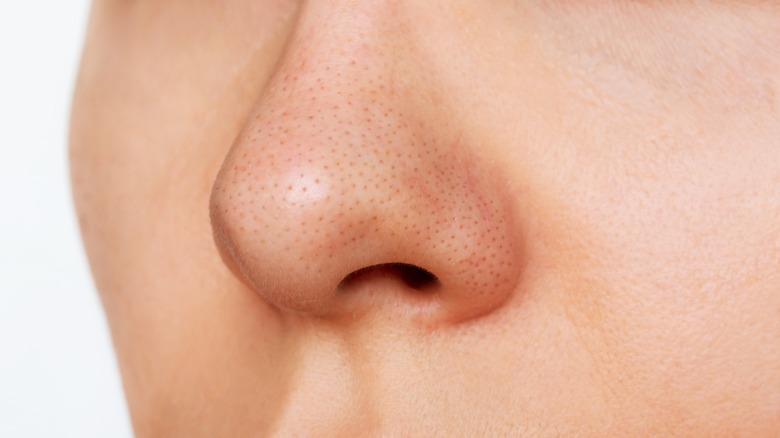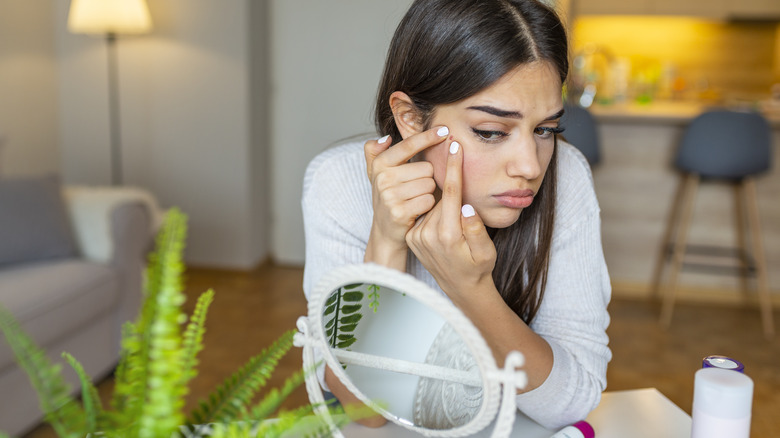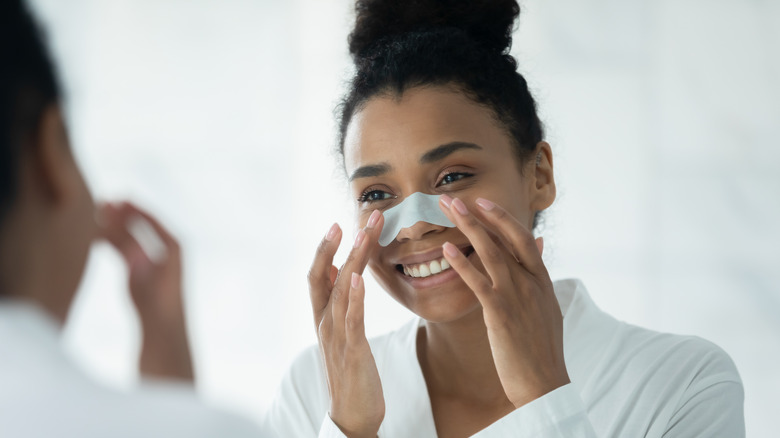Benzoyl Peroxide Isn't The Best Way To Get Rid Of Blackheads - What To Use Instead
For those of us who grew up in the 80s and 90s, Clearasil was often the go-to when you wanted to get rid of a pimple. Its main ingredient benzoyl peroxide became synonymous with breakouts. A tube of Clearasil for an acne-prone teen became a prized possession.
Though there are countless other products on the market today targeting pimples and acne, many people still quickly resort to grabbing any kind of cream with benzoyl peroxide in it when experiencing a breakout. Benzoyl peroxide is an FDA-approved medication used to treat acne and its over-the-counter convenience is partly what has m it so popular for decades. It doesn't require going to a dermatologist and works pretty well on mild cases.
However, if you are trying to get rid of blackheads, benzoyl peroxide won't work. Though blackheads are a type of acne, they are very different from pimples. Here's why blackheads require a different type of treatment.
How blackheads differ from pimples
Acne can cause simple blackheads and that is known as non-inflammatory acne. However, inflammatory acne is an entirely different process that occurs in the skin. The affected area becomes inflamed, appears very red and swollen, and produces pimples, pustules, or large cysts. It can also be very painful. Inflammatory acne is common and responsible for much of the acne of the teen years, as well as in other times throughout life when acne caused by hormonal shifts is dominant, like pregnancy and menopause.
Both blackheads and pimples result from blocked pores (via Verywell Health). Yet, while blackheads are straightforward blocked pores, in inflammatory acne, pimples, pustules, and cysts are blocked pores that are not only inflamed but filled with bacteria. The skin attempts to launch a defense against the bacteria that is filling up the pores and that's when inflammation begins.
Benzoyl peroxide is an antimicrobial that works to help reduce the redness and irritation of inflammatory acne, but it won't do anything to help get rid of the blackheads associated with non-inflammatory acne.
How to remove blackheads
While not as noticeable or painful as pimples, blackheads can still be frustrating because they look like tiny specks of dirt on your skin, and they may infiltrate certain areas of your face and gather in groups. Still, they are effective ways to remove them.
Topical solutions that can help get rid of blackheads include salicylic acid and retinoid creams, as per WebMD. Both work to break down the dead skin often found in clogged pores and can be purchased over the counter. A dermatologist can prescribe a higher-strength formula as well as monitor their use since they have the potential to irritate and dry out the skin.
A dermatologist can also extract blackheads right in the office using extraction tools. It's not painful and gently pushes the blackhead out of the pore. There are home extraction tools available in stores and online, too though some doctors warn against doing it yourself since scarring can occur. An easier way to remove and prevent future blackheads is to use pore-cleaning strips on a regular basis to keep pores from clogging.


